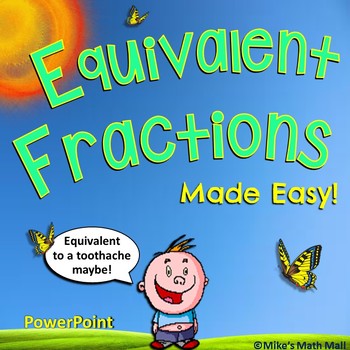Equivalent Fractions Made Easy (PowerPoint Only)
- Zip
What educators are saying
Description
Equivalent Fractions - This is a fun, interactive, and engaging PowerPoint covering equivalent fractions. This extremely important concept lays the foundation for adding, subtracting, comparing, and ordering fractions.
Included in this lesson:
PowerPoint
Animated, interactive, and fun, 17-slide PowerPoint (multi-day use) covering:
-Definition of fractions and equivalent fractions
-Creating equivalent fractions using multiplication
-Creating equivalent fractions using division
-Reducing/simplifying fractions
-Checking for equivalent fractions
Each section offers plenty of practice problems for immediate concept reinforcement.
Please note! Overlapped text in “edit” mode will not appear overlapped in “play” mode.
-Full color posters/anchor charts also included
Need the entire bundle (this PowerPoint, 6 practice pages, assessment, anchor charts, etc.)? Check out:
Equivalent Fractions Made Easy (Mini Bundle)
*PowerPoint may not be compatible with some Mac software.
I Sincerely Hope this Helps! And Thank You!
Copyright© 2021 Mike Walker
Permission to copy for single classroom use only.





